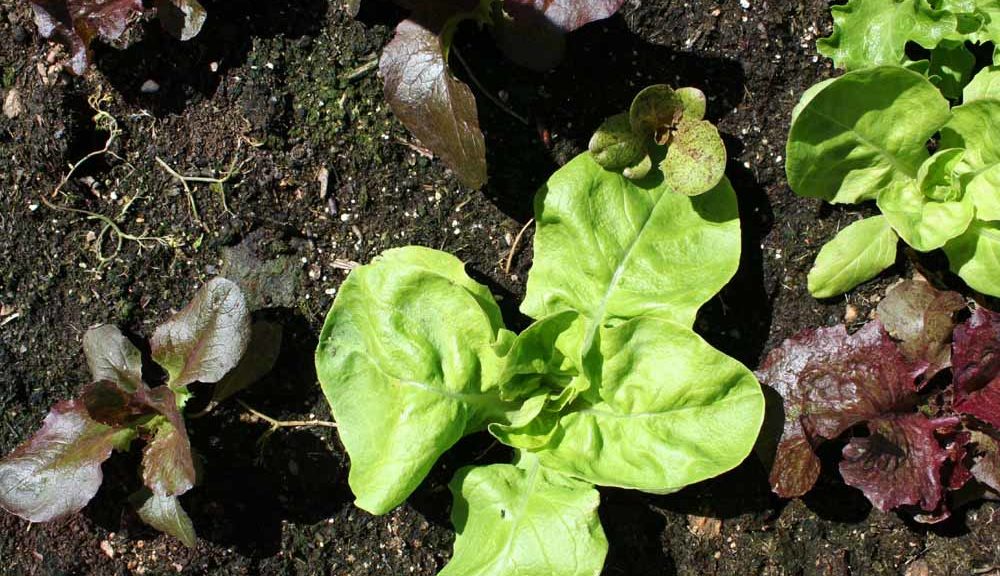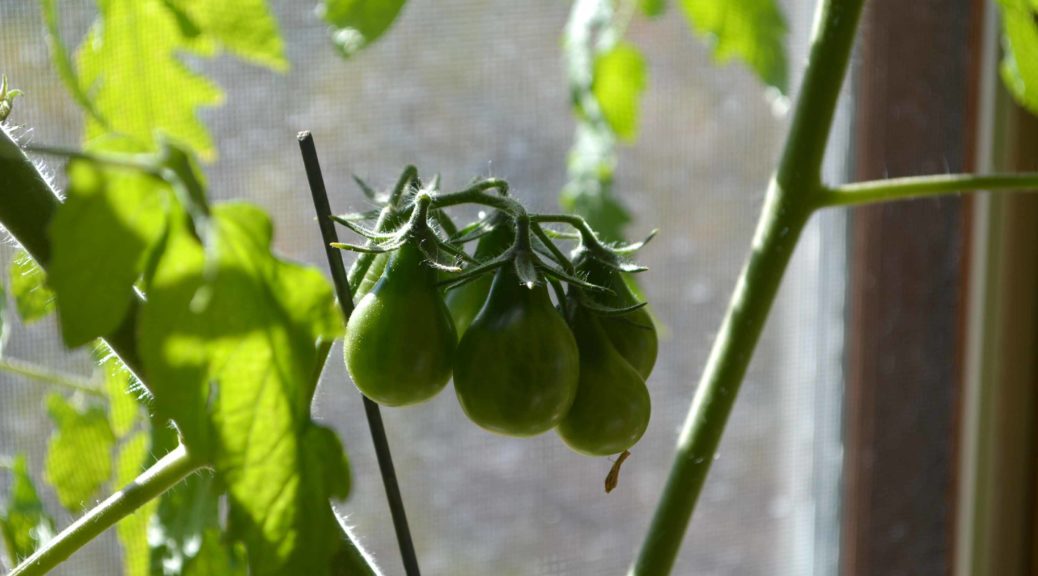Americans are panic hoarding plant seeds as the coronavirus outbreak confines millions to their homes, crashes the economy, and disrupts food supply chains. This has resulted in people questioning their food security.
A Google search of “buy seeds” has rocketed to an all-time high across the US in March to early April, the same time as supermarket shelves went bare.
Seed companies who spoke with CBS News said they have stopped taking new orders after unprecedented demand. George Ball, chairman of Pennsylvania-based Burpee Seeds, said the recent increase in new orders is “just unbelievable.” The company will start accepting orders again on Wednesday after it stopped taking new ones for several days to catch up on the backlog.
Americans in quarantine are becoming increasingly concerned about their food security. What has shocked many is that food on supermarket shelves that existed one day, could be completely wiped out in minutes via panic hoarding. Some people are now trying to restore the comfort of food security by planting “Pandemic Gardens.”
“If I had to put my thumb on it, I would say people are worried about their food security right now,” said Emily Rose Haga, the executive director of the Seed Savers Exchange, an Iowa-based nonprofit devoted to heirloom seeds.
Category Archives: Off Grid Living
Using All Those Dry Beans that You Stockpiled
Tip: When building up your disaster food stockpile, think about how you will use the foods in meals. Otherwise, you could end up with a lot of foods you don’t like. Or you might end up with disproportionate amounts of food, like 30lbs of pasta but not sauce to go on it.
In my book Disaster Preparedness for Women, I show exactly how to plan a food stockpile so you can make healthy, balanced meals. The book also covers all the preparedness essentials so you are ready for anything. Get the book here.
Here are 11 tasty ways to use dried beans Try these delicious dried bean recipes.
1. Red Bean Pasta Sauce
Source: 11 Delicious Ways to Use Those Dry Beans You Stockpiled
Click on the link for 10 more useful recipes. You did realize that you’d have to eat all those didn’t you?
Grow Your Victory Garden Today
The fight against coronavirus has been likened to a war—some have even referred to it as “World War C”—and it looks like wartime Victory Gardens are making a comeback. Today, the goals are different but the interest in growing a little (or a lot) of your own food is still the same! Let’s talk about planting a Victory Garden in 2020!
During WWI, the National War Garden Commission promoted home gardening and food preservation. They inspired students—calling them “soldiers of the soil”—to help plant Liberty Gardens. When it started to look like the US and its allies would win the war, the name of the gardens was changed to Victory Gardens.
TYPICAL VICTORY GARDEN CROPS
Vegetables were the largest crop followed by fruits and herb gardens. About one-third of the vegetables grown during World War II came from Victory Gardens!
The Victory Garden was made of easy-to-grow crops, including fresh vegetables in season as well as root crops and hardier crops that could be stored during the winter. Here’s a sampling.
- Spring gardens: Carrots, lettuce, kale, onion, peas, radishes.
- Summer gardens: Basil, beans (pole, bush, and lima), corn and popcorn, cucumbers, eggplants, muskmelon, okra, peppers, pumpkin, both winter and summer squash, tomatoes, watermelon.
- Fall and winter gardens: Beets, broccoli, cabbage, carrots, cauliflower, lettuce, kohlrabi, parsley, parsnips, radish, spinach, Swiss chard, turnips.
Source: Plant a Victory Garden During Coronavirus Quarantine Old Farmer’s Almanac
15 Tricks for Gardening With Limited Supplies
If you are itching to get your hands dirty but have few gardening supplies on hand and hesitate to head to the store, take a look around the house and yard.
You may find many items that can be re-purposed into just what you need. Here are some cheap tips and tricks for house-bound gardeners!
Source: 15 Tricks for Gardening With Limited Supplies | Old Farmer’s Almanac
Some great ideas for the home gardener. Enjoy…
News – April 8, 2020
It’s been a busy time here at the ranch. Not surprisingly, everyone who has been on the fence about buying land feels more motivated. I have clients who would love to come to their property and get away from the madness of the city, but they are locked down in Socal, and can’t leave. I believe that we’ll have a big uptick once the lockdown is lifted.
Some days, I feel a little depressed about it all. The anxiety of not knowing the future is disconcerting, and I feel a bit of unease in every waking moment.
Thankfully, I have our garden. Though it probably wouldn’t be enough to keep us from being a bit leaner later on, it’s relaxing, and I always leave the phone up at the house so as to have a brief moment of calm in the flurry. Having 40 acres means I don’t have to sit in the house, and that helps I think.
I’m also thankful of my career as a land broker. I have helped many people to move to this beautiful area. The solar off grid life is not the easiest, but there are many rewards that make the lack of convenience worth it.
Real estate sales are not easy. I’m reminded of the old adage that we in real estate just work half days, you know, 12 hours a day. It’s true!
For the buyers today, my job is just to know what’s best out there for the money. Stagecoach Trails being over 130,000 acres offers a variety of terrains and locations. Zeroing in on what the needs of the buyer are long term seems to be the most important thing.
Educating buyers on costs to do a well, septic, solar etc. may have prevented some financial mishaps (and cost a few sales.) Truth is that it really does cost more than you realize to get it all set up. If I can keep folks grounded in reality as to what it takes to live off grid, I feel it’s best for all of us in the long run.
For sellers the key is pricing. What one wants is not always what the market will bear. We’d all have loved to sold any stock investments in February, ah but it’s too late.
We have an abundance of inventory, but for the first time since the market started dropping in earnest in 2009, we are seeing some slight appreciation upward. There are fewer and fewer “bargains.” Buyers take note!
To all of you reading, please leave a comment or two. Thanks for stopping by! -Ben
8 Simple Ways To Live Off Grid On Less Watts – Off The Grid News
Here’s a few good tips to reduce your power usage. Solar power works fine, but often one has to adjust to the whims of nature, and on the cloudy days use less power.
=====================
Here are just a few of the changes that we made to our off-grid lives that helped us use less watts:
- We never took a shower before the sun was up.
- Also, we never took a shower when the sun was down.
- Made sure we only did laundry between 11 a.m. and 2 p.m., and only one load per day.
- We went to bed early and got up early (this proved to be most productive).
- Always used battery-operated lanterns and book lights for evening reading.
- Made sure we unplugged everything — the coffee pot, the toaster, etc. – when not in use.
- We rarely used the microwave.
- Never left the TV on, and we used it sparingly.
Source: 8 Simple Ways To Live Off Grid On Less Watts – Off The Grid News
Nutritious Food Plants You Can Harvest Quickly
Here’s a great list of quick vegetables that everyone should see.
We’ve grown them all!
We only need a few weeks to produce some nutritious vegetables and enjoy them for a great lunch or dinner.
Imagine having fresh spinach harvested four to six weeks after planting. Even better, a vegetable garden in your backyard will complement that verdant, green lawn and add some color and texture to your landscape.
There are many wholesome veggies you can grow, relatively quickly, a few steps away from your kitchen. Here are five vegetables to get you started.
Source: Nutritious Food Plants You Can Harvest Quickly – The Prepper Journal
Homemade Bug Spray: Natural & Effective Repellent Recipes
Here are four all-natural homemade bug sprays that can kick those pesky insects to the curb.
If you don’t like the idea of spraying too many chemicals on yourself or your children, these recipes take seconds to mix up and really work for every day sprays.
KNOW THY ENEMY
As soon as we step outside, bugs have a way of finding us. Some use the CO2 we exhale to locate us, others go by scent, body heat, vibrations, or even the colors we wear.
For example, deerflies are attracted to CO2, warmth, motion, and dark colors. One way to make yourself less attractive to insects is to avoid using fragrant soaps, lotions, perfume, hairspray, or aftershave. Instead, use scents that block their receptors, making you harder to find.
Mosquitoes hate citronella, lemon eucalyptus, cinnamon, geranium, and catnip.
Ants and flies dislike mint, basil, and bay.
Tiny gnats (such as No-See-Ums) are repelled by citronella, lemongrass, and rose geranium.
Ticks and lice avoid lemon eucalyptus and geranium.
Source: Homemade Bug Spray: Natural & Effective Repellent Recipes | The Old Farmer’s Almanac
How to Detect Air Leaks & Save Money
It doesn’t matter if your home was built in 1968 or 2018: There’s a good chance it has at least a few air leaks.
So what, you ask? Well, an increase in unwanted airflow could cut into your cash flow in the long run. “If you’re not sealing your home against air leakage, you’re significantly reducing your energy efficiency,”
Source: How to Detect Air Leaks and Stop Hemorrhaging Money | realtor.com®
When one lives off-grid, every bit of power can be used just for cooling in the summer. The generator is our friend (although an expensive one.)
Today, our temps are expected to be around 110 degrees Fahrenheit, so we like that our super insulated straw bale house is keeping us in the high 70’s inside.
Batteries & solar panels become less efficient in the extreme heat, so it’s a double blow to our power needs.
Mornings are nice. We started off the morning at 86 degrees outside, but by 9:00 am it has jumped to 98 degrees.
Stay cool!
Make Emergency Candles from Bacon Grease
…Nothing beats a flashlight or an emergency candle in case the power goes out, but what are you going to do when there’s no more juice in that lantern and the last piece of flick died out like the ambitions and desires of a crestfallen lover?
Make some more, of course, because that’s we preppers are good at. In today’s article, I’m going to show you a fast way to create 24-hour emergency candles by harnessing the raw power of your favorite dish – bacon.
Yup, you’ve read that right. Bacon’s not only great for breakfast, but can also be used to make portable and highly efficient light sources. So, enough chit chat! Let’s take a look at how bacon candles are made.
Source: How To Turn Bacon Grease Into Emergency Candles – Daily Prepper News





